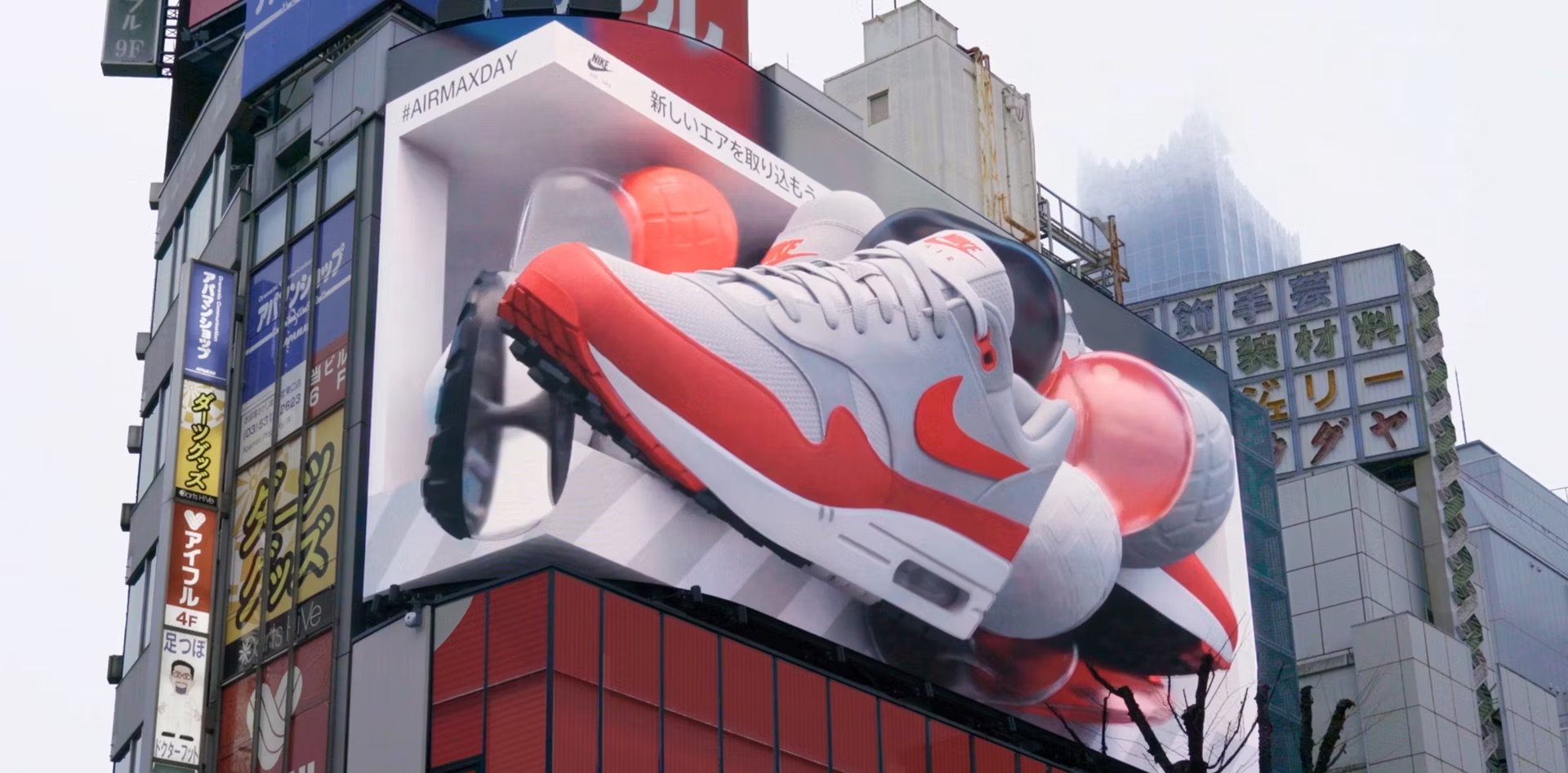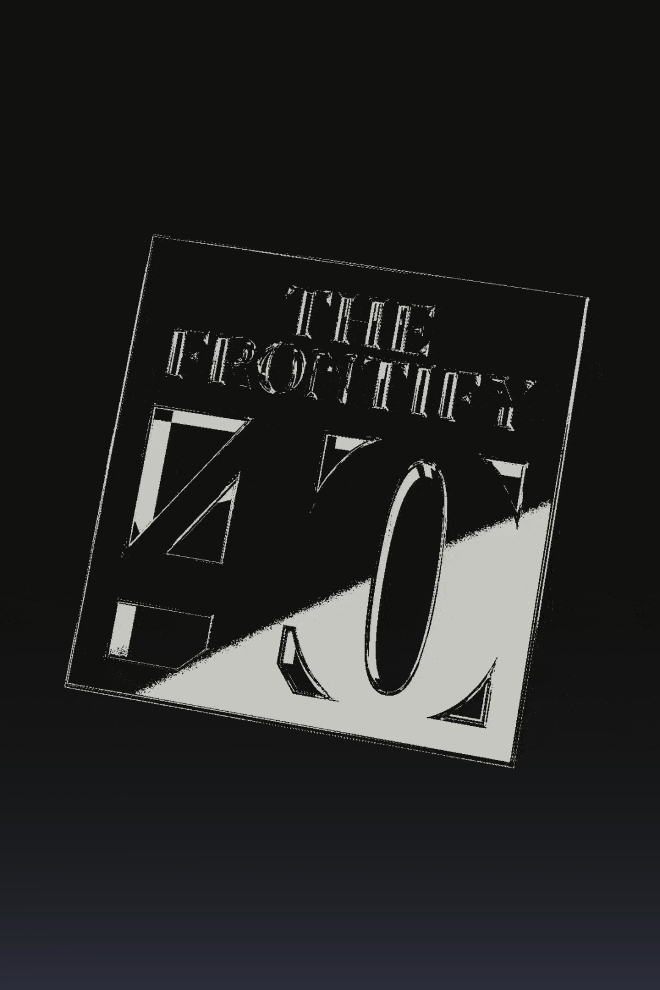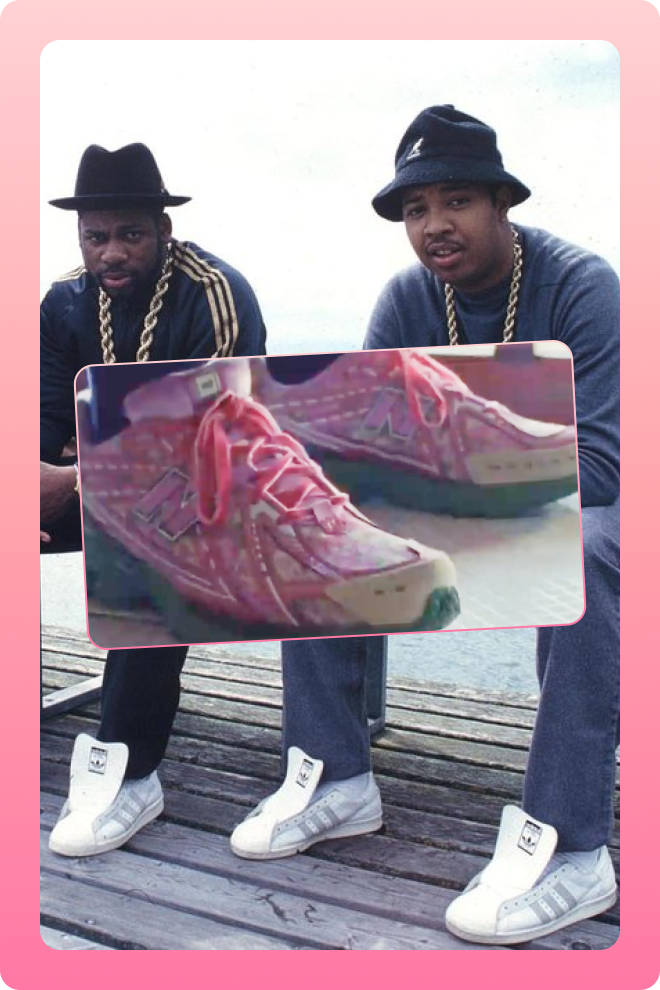- Z-depth is evolving from creative luxury to commercial necessity with proven ROI metrics
- 3D visualization dramatically increases conversion rates — up to 94%
- Most brand managers still prioritize 2D assets, missing opportunities for richer brand expressions
- Forward-thinking brands like Nike are creating spatial storytelling experiences that drive engagement
- The expanding spatial computing market ( USD 1,066.13 billion by 2034) makes 3D brand assets strategic priorities
Key takeaway: 3D branding isn't just a visual enhancement — it's a business accelerator that drives measurable improvements in engagement, conversion, and customer satisfaction.
The future of branding isn't flat.
While two-dimensional guidelines and static assets remain the norm, leading brands are discovering that the addition of Z-depth — the depth-of-field an image acquires when it goes from 2D to 3D — delivers not just visual distinction but measurable business impact.
This isn't merely a design trend. It's a fundamental shift in how brands must express themselves in an increasingly dynamic digital landscape.
The numbers tell a compelling story:
Shopify reports that 3D visualization increases conversion rates by up to 94%; Threekit cites a 250% boost in conversions with 3D product configurators, and Google 1 has found that 3D visuals generate 50% higher engagement compared to static imagery.
1According to Google, products with 3D imagery have 50 percent more user engagement when compared to products with 2D images. By uploading 3 hi-res images of a product, Google will create the 360-spin product image for you.

2Held every March 26, Nike’s annual Air Max Day celebration is an essential date on every sneakerhead’s calendar. In 2022, the Nike Japan team launched the brand’s first 3D OOH campaign to mark the trainer’s 35th birthday.
What was once a creative luxury has become a commercial imperative over the past few years.
Back in 2022, Nike's anamorphic 3D billboard 2 for Air Max Day featured sneakers appearing to burst out of an oversized shoebox in Tokyo's bustling Shinjuku district.
The brand has continued this spatial storytelling approach with its .SWOOSH digital collectibles, which render 3D shoppable “kicks” in video games like Fortnite.
They’ve even deployed interactive in-copy display ads that let readers change colorways and flip sneakers with their fingers while scrolling through web pages.
Coca-Cola blurred the 2D/3D boundaries even further with their “3Drinklable” billboard 3 that dispensed actual beverages to pedestrians, transforming passive advertising into an interactive physical experience.
3Coca-cola’s 3Drinkable billboard had Vermeer’s Girl with a Pearl Earring dispensing actual cans of Coke to passers-by. There’s a sentence you never thought you’d read.
4Airbnb ‘s 2025 app redesign featured a layered nav, tactile buttons and spatial UI clues, driving longer sessions and higher interaction rates.
For DAM users, campaigns like Airbnb’s 2025 app redesign are a good case study to bear in mind.
By introducing 3D elements like layered navigation 4, tactile buttons, and spatial UI cues, the brand created a more immersive, emotionally engaging experience — driving longer sessions and higher interaction rates.
Dimensional thinking like this is driving engagement in an attention-starved market. “Most brand managers still regard their flat, 2D motif as the ‘true’ identity,” explains Graham Harvey, founder of 3D studio Eskimo Square 5, which has created dimensional assets for Aston Martin, Sky TV, and Korean Air.
“This creates an unnecessary tension between the static and dynamic versions of a brand's assets and misses the opportunity to develop richer brand expressions.”
Looking to the future, spatial computing platforms will steadily gain consumer adoption (the global spatial computing market size is expected to reach around USD 1,066.13 billion by 2034), making 3D brand assets increasingly vital.
The message for brand leaders is clear: If you're still treating 3D as a secondary consideration or a special effect rather than a core strategic asset, you're already falling behind.
The brands that understand how to leverage Z-depth will create entirely new ways of connecting with audiences that drive measurable business results.
5Eskimo Square provide dimensional assets for brands as diverse as Aston Martin, Sky TV, and Korean Air.








